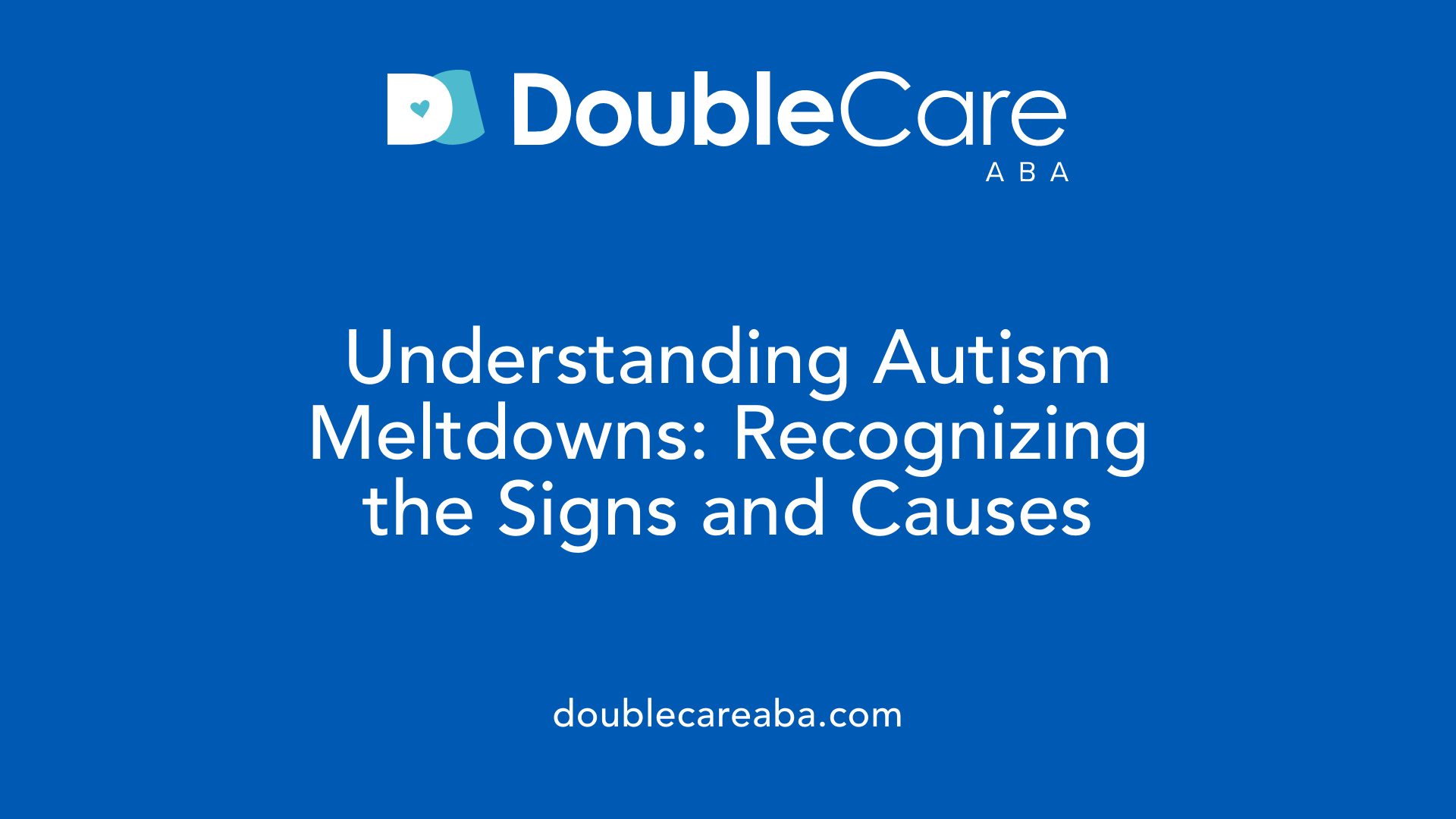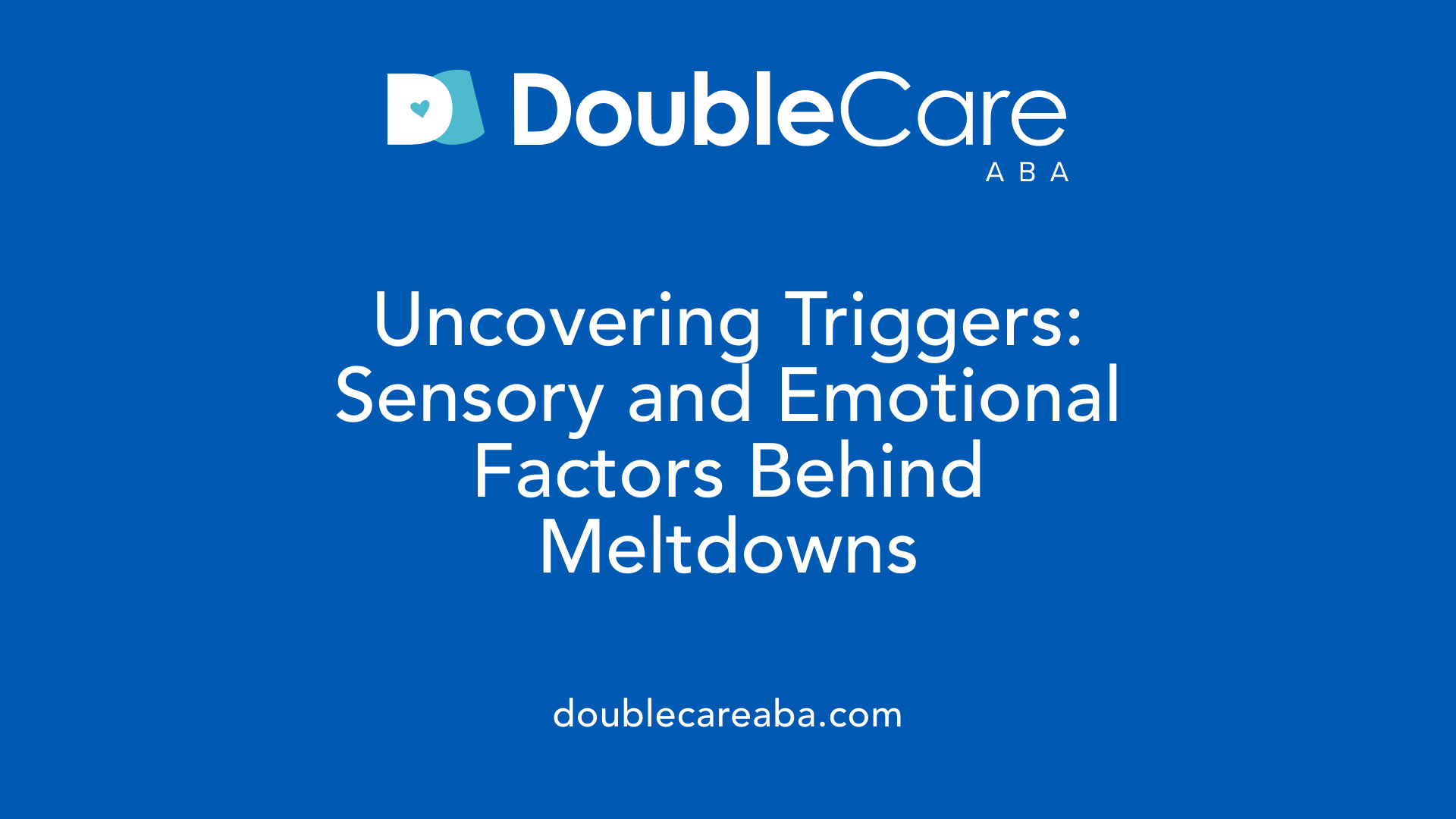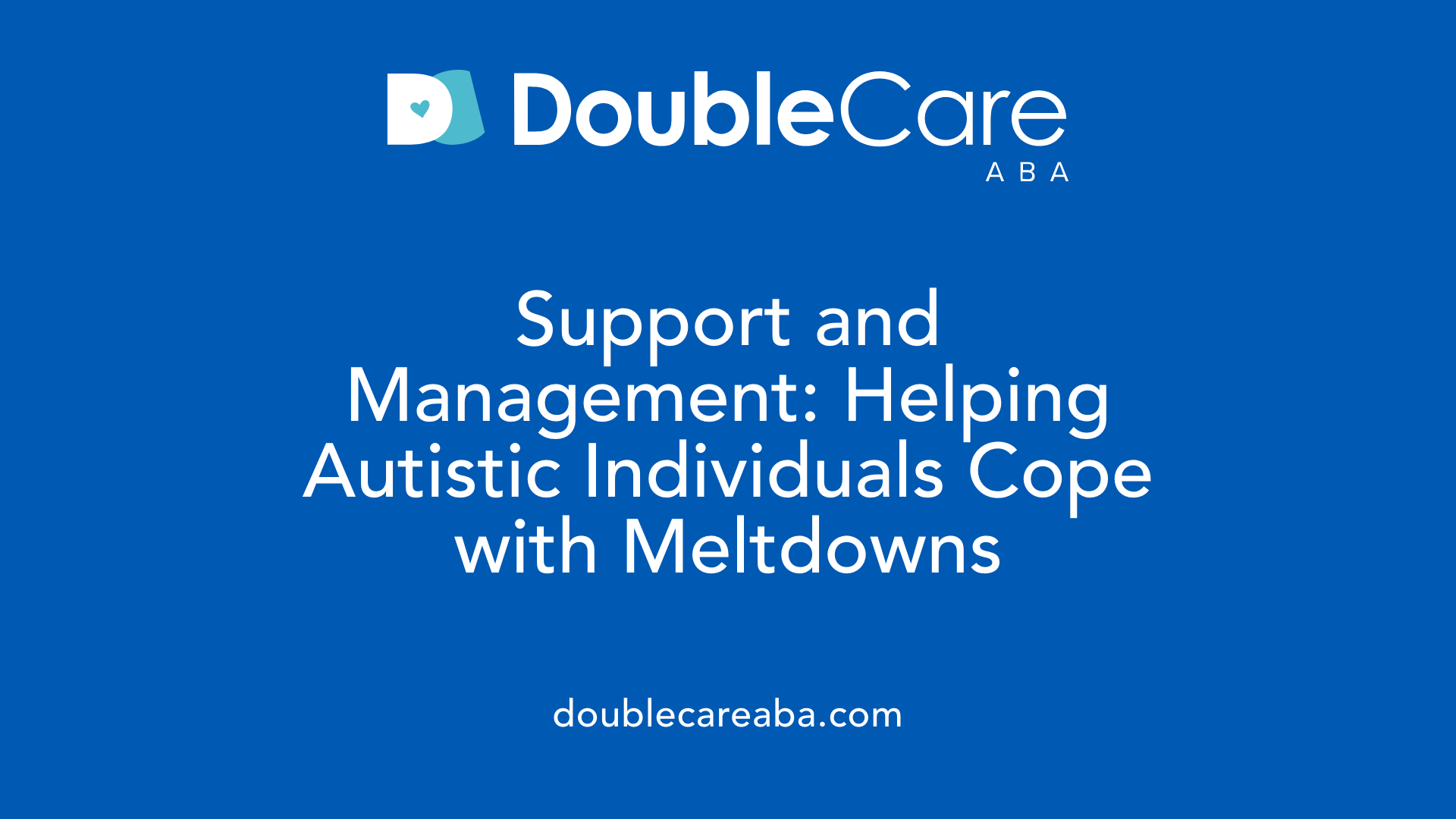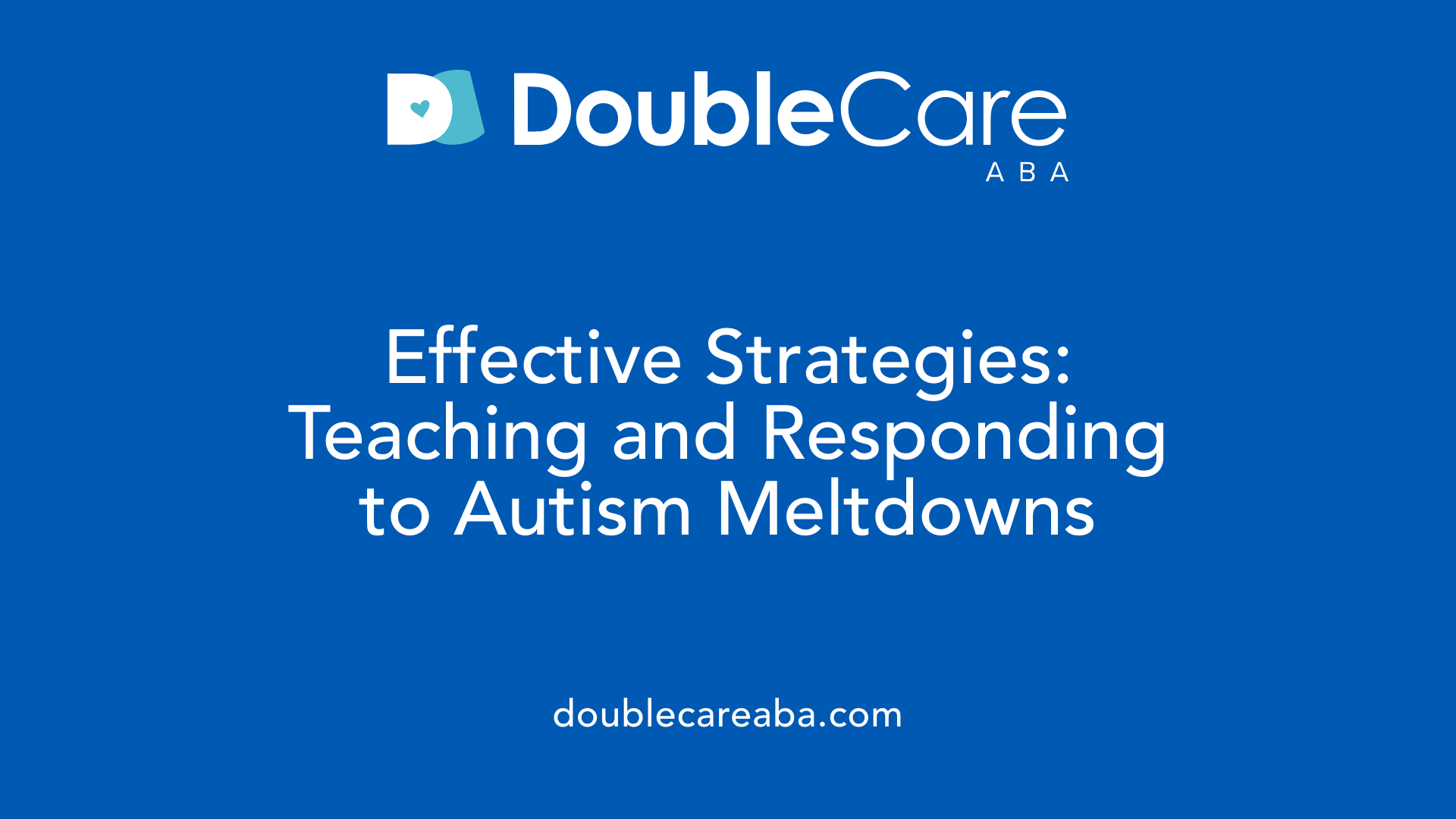What Are Autism Meltdowns?
Understanding the Complexities of Autism Meltdowns

Demystifying Autism Meltdowns and How to Support Them
Autism meltdowns can be some of the most intense and confusing moments for both individuals with autism and those around them. Unlike typical behavioral episodes, meltdowns are involuntary responses driven by sensory overload, emotional distress, and neurological factors. This article aims to provide a comprehensive understanding of what autism meltdowns are, how they differ from tantrums, their causes and signs, and effective strategies for management and support across different age groups.
What Are Autism Meltdowns?

What are autism meltdowns?
Autism meltdowns are intense, involuntary reactions to overwhelming sensory, emotional, or environmental stimuli. They occur when an autistic individual becomes overwhelmed to the point of losing control of their behavior, which can manifest as crying, screaming, physical outbursts, or shutting down. Meltdowns are not intentional or manipulative; instead, they are a neurobiological response to overload and sensory processing difficulties.
These episodes typically happen when there is a high level of stress that the individual cannot manage through typical coping strategies. The nervous system becomes dysregulated, leading to a loss of control over emotions and actions. Symptoms may include loud vocalizations, physical movements such as kicking or flapping, or complete withdrawal and silence. They can last anywhere from a few minutes to over an hour, often continuing for 20-30 minutes past the initial trigger.
Common triggers include sensory overload from bright lights, loud noises, textures, smells, or tastes. Changes in routine, social pressures, or an inability to express needs can also prompt meltdowns. Recognizing early warning signs, such as pacing, repetitive questioning, or increased anxiety, can help prevent full-blown meltdowns.
Manifestations of meltdowns
During a meltdown, individuals may display a variety of behaviors depending on their unique responses and severity of overload. These can include shouting, crying, smashing objects, running away, or exhibiting intense stimming behaviors like flapping or rocking. Some may lash out physically or self-harm as an expression of their distress.
Physiological signs also often accompany meltdowns, such as muscle tension, a racing heart, shaking, or head pressure. Internally, they might feel an intense feeling of being out of control or may have difficulty thinking clearly, experiencing memory issues or disorientation.
For adults, meltdowns might involve yelling, raging, or physically lashing out, sometimes accompanied by feelings of regret or self-criticism afterward. Meltdowns are often misunderstood as tantrums or acts of misbehavior, but they differ critically in that they are not goal-directed or attempted to manipulate others.
Difference between meltdowns and other behaviors
It is essential to distinguish between meltdowns and tantrums. Meltdowns are involuntary, driven by neurological overload, and cannot be stopped once they begin. They happen because the individual’s nervous system is flooded with sensory or emotional input, leading to a temporary loss of control.
Tantrums, by contrast, are deliberate, goal-oriented behaviors. They are strategies used by children, often younger ones, to communicate frustration or gain a particular outcome. During a tantrum, the child is aware of their actions and can often be reasoned with or redirected.
Understanding this difference is vital for response and support. While a tantrum might be seen as misconduct, a meltdown should be approached with empathy, ensuring safety and reducing sensory input to help the individual regain composure.
Summary of differences:
| Aspect | Meltdown | Tantrum |
|---|---|---|
| Voluntary | No | Yes |
| Duration | Usually longer | Usually shorter |
| Cause | Overload, inability to cope | Frustration, unmet needs |
| Purpose | No purpose; involuntary | Goal-oriented |
| Response to | Overwhelming stimuli or emotion | Frustration or desire |
| Management | Minimize sensory input, ensure safety | Redirect, negotiate, or offer rewards |
By understanding these differences, caregivers and individuals alike can foster a more supportive environment, ensuring safety and fostering trust during difficult moments.
Understanding the Causes and Triggers

What causes and triggers autism meltdowns?
Autism meltdowns are primarily caused by an overwhelming buildup of sensory or emotional stimuli that exceed an individual's ability to manage or process coping strategies effectively. These episodes are not acts of defiance or manipulation but are involuntary responses to feeling completely overwhelmed. Common sensory triggers include loud noises, bright or flickering lights, certain textures, strong smells, or rapid movement, which can all contribute to sensory overload.
Beyond sensory input, emotional and cognitive factors play a significant role. Changes in routine, unfamiliar environments, unmet needs like hunger or tiredness, anxiety, social pressures, or mental health challenges can heighten feelings of distress. When these factors combine with sensory overload, they can push a person into a meltdown. Additionally, physical health issues such as lack of sleep, illness, or medication reactions may further impair coping ability.
The core trigger of a meltdown is the feeling of losing control over emotions or behavior, often due to the nervous system's heightened response. It is a reaction rooted in neurological differences that affect how sensory information is processed and managed.
Prevention involves understanding the individual's specific triggers through observation and communication. Establishing predictable routines, providing a calm environment, and using visual supports or calming strategies can help mitigate these triggers. Creating low-stimulation settings, planning ahead for changes, and ensuring basic needs are met are crucial steps in avoiding meltdowns.
How do sensory sensitivities contribute to meltdowns?
Sensory sensitivities significantly increase the risk of meltdowns because they make routine sensory stimuli feel overwhelming or threatening. Individuals with autism often experience heightened sensitivity to sounds, textures, lights, smells, tastes, and movement. Such stimuli can quickly lead to a sensory overload—a state where the nervous system becomes hyperactivated.
This overload can cause a cascade of symptoms like increased anxiety, irritability, physical tension, and difficulty concentrating. When the brain perceives these stimuli as potential threats, it reacts with a fight-or-flight response, which may escalate into a meltdown if the individual cannot retreat or filter out the sensory input.
Managing sensory sensitivities involves providing accommodations such as noise-canceling headphones, sunglasses, weighted blankets, or sensory-friendly environments. These tools help reduce the intensity of stimuli and prevent overload. Additionally, routines that limit unexpected sensory input and scheduled calm breaks allow the individual to regain control and avoid triggering a meltdown.
By understanding the impact of sensory sensitivities, caregivers and support persons can better tailor environments and schedules to meet the comfort levels of autistic individuals, reducing the occurrence of meltdowns caused by sensory overload.
Recognizing Signs and Symptoms

How can you recognize the signs and symptoms of an autism meltdown?
Recognizing the signs of an autism meltdown requires careful observation of both physical and emotional cues. Early warning signs often include increased anxiety, irritability, difficulty communicating, and heightened sensory sensitivity. Individuals may become more withdrawn or show repetitive behaviors such as pacing or rocking.
During a meltdown, observable behaviors can span crying, screaming, flapping, kicking, or even shutting down completely. Physical responses might include trembling, clenching fists or teeth, and behaviors that seem out of the individual’s control. These episodes can last anywhere from ten minutes to several hours, often continuing even after the initial trigger is gone.
Pre-emptive indicators are particularly important; signs like pacing, repeating questions, or becoming very still can signal that a meltdown is imminent. Recognizing these cues early enables caregivers and support persons to implement calming strategies, such as creating a quiet environment, providing sensory tools, or offering reassurance.
Understanding these signs and acting promptly can help reduce the severity and duration of meltdowns, making environments more manageable for all involved.
Are there specific behavioral cues that indicate an imminent meltdown?
Yes, certain behaviors can act as warning signals that a meltdown might be approaching. These include an increase in repetitive actions such as hand-flapping, tapping, or questioning. Individuals may also become more irritable, restless, or start to withdraw from social interactions.
Signs like covering ears to block out noise, avoiding or seeking specific sensory input, and becoming unusually tense are also indicative of impending distress. Pacing and inability to focus or follow routine tasks are common cues that stress levels are rising.
By paying close attention to these behaviors, supporters can intervene early, offering calming activities or a quiet space to de-escalate the situation before it escalates into a full meltdown. Recognizing these signs helps foster a supportive and understanding environment that prioritizes safety and comfort for autistic individuals.
Management and Support Strategies

How can caregivers help manage or prevent meltdowns?
Caregivers play a critical role in managing and preventing meltdowns by understanding the individual’s unique triggers. This often involves observing behaviors such as pacing, rocking, or questioning repeatedly, which can signal impending distress. Once triggers are identified—such as sensory overload, sudden routine changes, or unmet needs—caregivers can modify the environment proactively. Creating a predictable routine, offering choices to foster a sense of control, and preparing the person for upcoming changes can significantly reduce the risk of overwhelm.
During a meltdown, maintaining a calm demeanor is vital. Caregivers should guide the individual to a safe, quiet space, avoiding questions or demands that might escalate their distress. Using visual supports, calming objects, or music can support self-regulation. After the meltdown, validation of feelings and gentle reassurance encourage emotional recovery. Consistent routines and teaching self-regulation skills over time strengthen resilience against future meltdowns.
Proactive strategies such as visual schedules, sensory tools, and communication supports, along with fostering trust and safety, form the foundation of effective management and prevention. These approaches help individuals feel more in control and understood, ultimately reducing the frequency and intensity of meltdown episodes.
What techniques are effective during a meltdown?
When a meltdown occurs, the focus shifts from behavior control to safety and calming. Creating a calming environment is essential—this might mean moving the individual to a low-stimulation setting, such as a quiet room or a space with soft lighting. Using calming tools like noise-canceling headphones, weighted blankets, or calming scents can help soothe the nervous system.
Communication during a meltdown should be simple, minimal, and non-threatening. Using a soft voice, avoiding questions or demands, and providing non-verbal reassurance are effective. Physical restraint should be avoided unless absolutely necessary to prevent harm, and even then, it should be gentle and used only as a last resort.
Supportive objects that provide sensory input or comfort—such as a favorite toy, a piece of fabric, or a calming visual—help the individual regain control. Techniques like deep pressure, gentle rocking, or breathing exercises may also be helpful if the person is receptive.
Staying physically calm and present without becoming emotionally reactive helps prevent escalation. The goal during a meltdown is to ensure safety, reduce sensory overload, and support the individual towards self-regulation.
What should be included in post-meltdown support and recovery?
After a meltdown subsides, recovery involves creating a supportive environment that promotes comfort and emotional rebuilding. Offering familiar, soothing activities—such as listening to calming music, engaging in deep breathing, or using sensory tools like soft textures—can help the individual decompress.
Validation of feelings is crucial. Acknowledging that it’s understandable to feel overwhelmed or upset reassures the person that their feelings are recognized and accepted. Giving them ample time and space without pressure ensures they can regain their emotional balance at their own pace.
Discussing what triggered the meltdown should be reserved until the individual is calm. When appropriate, gently explore the antecedents to develop awareness and plan for future situations. Collaborating on strategies, such as adjusting routines or environmental modifications, can prevent similar episodes.
Regularly reviewing and updating support plans with input from caregivers, educators, or therapists ensures tailored, effective interventions. This ongoing reflection fosters a safe space for growth and resilience, helping reduce both the frequency and severity of future meltdowns.
Additional Considerations
Overall, the emphasis is on understanding, patience, and supportive intervention. Recognizing early warning signs, implementing calming techniques, and addressing triggers proactively are essential components of a comprehensive support strategy. The goal is to help individuals feel safe, understood, and in control, which ultimately leads to better emotional regulation and well-being.
Adapting Management Across Age Groups
How can management techniques for autism meltdowns vary across different age groups?
Managing autism meltdowns requires approaches that are sensitive to the developmental stage and communication skills of the individual. Techniques that work well for young children might differ significantly from strategies suitable for adults.
For children, prevention and intervention often include establishing and maintaining predictable routines, utilizing visual supports like picture schedules or social stories, and providing sensory regulation tools such as weighted blankets, noise-canceling headphones, and calming toys. Creating a safe, quiet space where the child can regulate their emotions is crucial. Caregivers and educators focus on understanding early warning signs, offering reassurance, and avoiding escalation with minimal questions and maximum patience.
In contrast, adults with autism benefit from ongoing self-regulation practices like mindfulness, breathing exercises, or relaxation techniques that they can implement independently or with support. Environmental modifications to reduce sensory overload—such as quiet rooms, adjustable lighting, and control over noise levels—are also useful. Adults may have more autonomy in managing triggers, but tailored strategies like workplace accommodations and planned breaks remain essential.
Despite these differences, the core principles of managing meltdowns—regulation, relating, and reasoning—apply across ages. What changes is the method of implementation, which must respect the individual’s developmental level and independence. For younger children, direct support and structured routines are central, while older individuals and adults often benefit from self-guided techniques and environmental control.
Overall, successful management hinges on personalized approaches. Professionals and caregivers should observe, learn, and adapt strategies, ensuring they are suitable for the individual’s age, maturity, and preferences. This proactive, respectful approach promotes independence and helps in building coping skills at every stage of life.
| Age Group | Strategies | Support Systems | Focus Areas |
|---|---|---|---|
| Children | Visual aids, sensory tools, routine management | Caregiver supervision, educational supports | Predictability, sensory regulation, emotional safety |
| Teenagers | Self-help tools, peer support, gradual independence | School accommodations, social skills training | Self-awareness, coping skills, gradual independence |
| Adults | Personal routines, self-regulation techniques | Workplace adjustments, therapy, community supports | Autonomy, stress management, environmental control |
| Seniors | Environment adaptation, personalized support plans | Healthcare support, community programs | Quality of life, independence, emotional well-being |
Educational Protocols and Responding Effectively

What should be included in education about protocols and responses to meltdowns?
Training caregivers and educators on how to handle meltdowns is essential for creating safe and supportive environments for individuals experiencing these episodes. Education should start with understanding that meltdowns are involuntary physiological responses to overwhelming sensory or emotional stimuli. Unlike temper tantrums, they are not goal-oriented or manipulative behaviors but reactions driven by the nervous system.
Recognizing warning signs is a critical component. Early indicators include pacing, repetitive questioning, increased irritability, withdrawal, or heightened sensory sensitivities. Proper education encourages adults to observe these signs and intervene before a meltdown escalates.
Proactive strategies include identifying and minimizing triggers, such as sensory overload or abrupt routine changes. Creating sensory-friendly spaces equipped with calming tools like noise-canceling headphones, weighted blankets, or visual supports can help prevent excess stress.
During a meltdown, responders should focus on maintaining a calm demeanor, providing a safe space, and using body-based calming techniques like deep pressure or slow breathing exercises. It is vital to avoid speaking or asking questions that could increase anxiety or frustration during the peak of the episode.
Post-meltdown, supportive actions involve giving the individual time and space to recover, engaging in calming activities, and validating their feelings. It is also important to conduct functional assessments to identify specific triggers, facilitating tailored prevention plans.
Education should emphasize the importance of a non-judgmental, empathetic approach, highlighting that reactions are not behaviors to punish but signals of dysregulation. Training should include creating personalized calm-down plans, using visual aids, and establishing consistent routines.
Overall, effective protocols combine understanding, proactive prevention, calm and supportive responses during meltdowns, and careful debriefing afterward. This approach not only helps manage current episodes but also reduces their frequency and severity, promoting emotional well-being and safety.
Supporting a Compassionate Approach to Autism Meltdowns
Understanding autism meltdowns as involuntary, neurobiological responses rather than behavioral manipulations is crucial for providing compassionate, effective support. Recognizing early signs, creating calming environments, and employing tailored management strategies across different age groups help minimize distress and promote emotional regulation. Education for caregivers, educators, and support staff about the nature of meltdowns and appropriate responses empowers them to handle these episodes with patience and understanding. Ultimately, fostering a safe, predictable environment combined with personalized intervention techniques can significantly improve the quality of life for individuals with autism and make support more responsive and empathetic.
References
- Meltdowns - a guide for all audiences - National Autistic Society
- All About Autistic Meltdowns: A Guide For Allies - Reframing Autism
- Understanding autistic meltdowns and shutdowns | Autism Space
- Making sense of autistic meltdowns in adults | Autism Speaks
- Meltdowns & Calming Techniques in Autism
- Meltdowns and shutdowns | Ambitious about Autism
- Autism Meltdowns: What to Do During & Afterward - Blue ABA
















